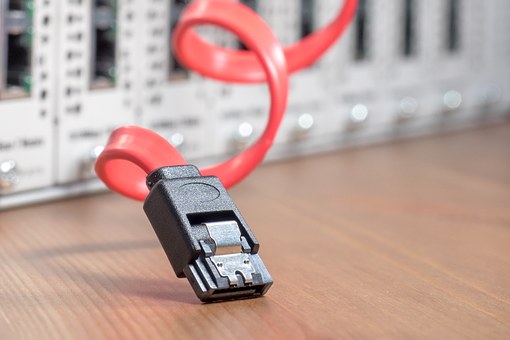Especially as they build up their Internet of Things environments, businesses will need three things in the near future: greater LAN speeds, higher power levels for PoE ports, and more connections. Greater speed and higher PoE means new cabling technology -- enter Category 6A twisted-pair copper cabling.
Knowing the Difference in Cabling Standards
Cat 3 cable, also known as voice-grade, or VG (as in 100BaseVG), is an unshielded twisted-pair (UTP) cable used to connect legacy telephones. It’s one of the copper cabling standards defined and specified jointly by the Electronic Industries Alliance (EIA) and the Telecommunications Industry Association (TIA) and published in TIA/EIA-568-B. Cat 3 can reliably support data rates up to 10 Mbps for Ethernet connections.
Cat 5 specifies four-pair cable consisting of twisted-pair conductors used mainly for digital transmission. Cat 5 cable is typically deployed for full-duplex Ethernet networks running at 10 or 100 Mbps.
Cat 5E cable is designed to support full-duplex Fast Ethernet (100 Mbps) operation, as well as Gigabit Ethernet. In addition, Cat 5e has stricter specifications for crosstalk, attenuation, and return loss than Cat 5.
Cat 6 cable provides higher performance than Cat 5e and features more stringent specifications for crosstalk and system noise. To transmit complying with Cat 6 specifications, jacks, patch cables, patch panels, cross-connects, and cabling must all meet Cat 6 standards. For example, if connectors in use comply with Cat 5e but not Cat 6 specs, then the Cat 6 cable can’t operate at 1 Gbps.
Introduction to 802.1ax
IEEE 802.11ax, marketed as Wi-Fi 6 by the Wi-Fi Alliance, is one of the two Wi-Fi specifications standards of IEEE 802.11. The other is 802.11ay, which has more problems penetrating surfaces like walls than does the ax version (see related No Jitter post, “
Cisco Goes Big with Wi-Fi 6.”
802.11ax access points (APs) are designed to operate in all-band spectrums between 1 and 7 GHz, when they become available, in addition to the existing 2.4- and 5-GHz bands. Device vendors have demonstrated a top speed of 11 Gbps. Throughput speeds are four times higher than they are for IEEE 802.11ac, even though the nominal data rate is about 37% faster at most with latency down 75%. Connecting the new APs will require higher-speed cabling (10 Gbps) and new LAN switches.
Here Comes Cat 6A
To reduce crosstalk, Cat 6A has additional and tighter twists and insulation than previous versions. Cat 6A is backwards-compatible with Cat 6 and Cat 5E; the speeds are limited, and will perform to the lowest-category cable or connector installed in the link. Cat 6A is the cabling expected to support the new Wi-Fi 6 APs.
Businesses can expect Cat 6A cabling to cost at least about 20% more to implement than Cat 6, but when you consider the growth in devices powered by PoE and in the number of wireless users, it’s more difficult than ever to make a case for implementing anything lower than Cat 6A. Not selecting Cat 6A could put businesses at risk of needing to replace Cat 5e and Cat 6 cabling in order to support 802.11ax APs.
Selecting Cat X Cable
The 10-Gbps network on Cat 6 cables is limited to 164 feet, including patch cables. Beyond this distance, the speed is the same as Cat 5e or 1 Gbps.
Cat 6 has a tighter twist in the cables, which supports two-way communication on each pair of wires. Cat 5e doesn’t support this feature. Cat 5e and Cat 6 support 1-Gbps networks. Cat 5e may have a longer delay, which makes it seem that it’s running more slowly.
The Cat 6 cable primarily uses 23-gauge wires, and sometimes Cat 6 may have a plastic piece in the middle of the cable that splits the pairs apart, making the cable thicker. The purpose of this design it to limit crosstalk.
Cat 6A uses 16- to 20-gauge wires. Thicker wire translates onto higher PoE. Cat 6A cable is considerably thicker then Cat 6, which in turn is thicker than Cat 5. Cabling space may limit the number of cables that can be run in a conduit. Cat 6A supports 10 Gbps for the full distance of Ethernet (328 feet). Cat 6A also reduces the crosstalk among the wire pairs, which reduces the cable delay. You’ll have to verify if the Cat 6A cable can support PoE standard 802.3bt with power delivery of 60 and 100 watts.
If you’re looking to the future, Cat 6A will deliver the best performance at the full distance. If, however, you have no cable length requirements over 120 to 150 feet, then Cat 6 will support 10 Gbps.










